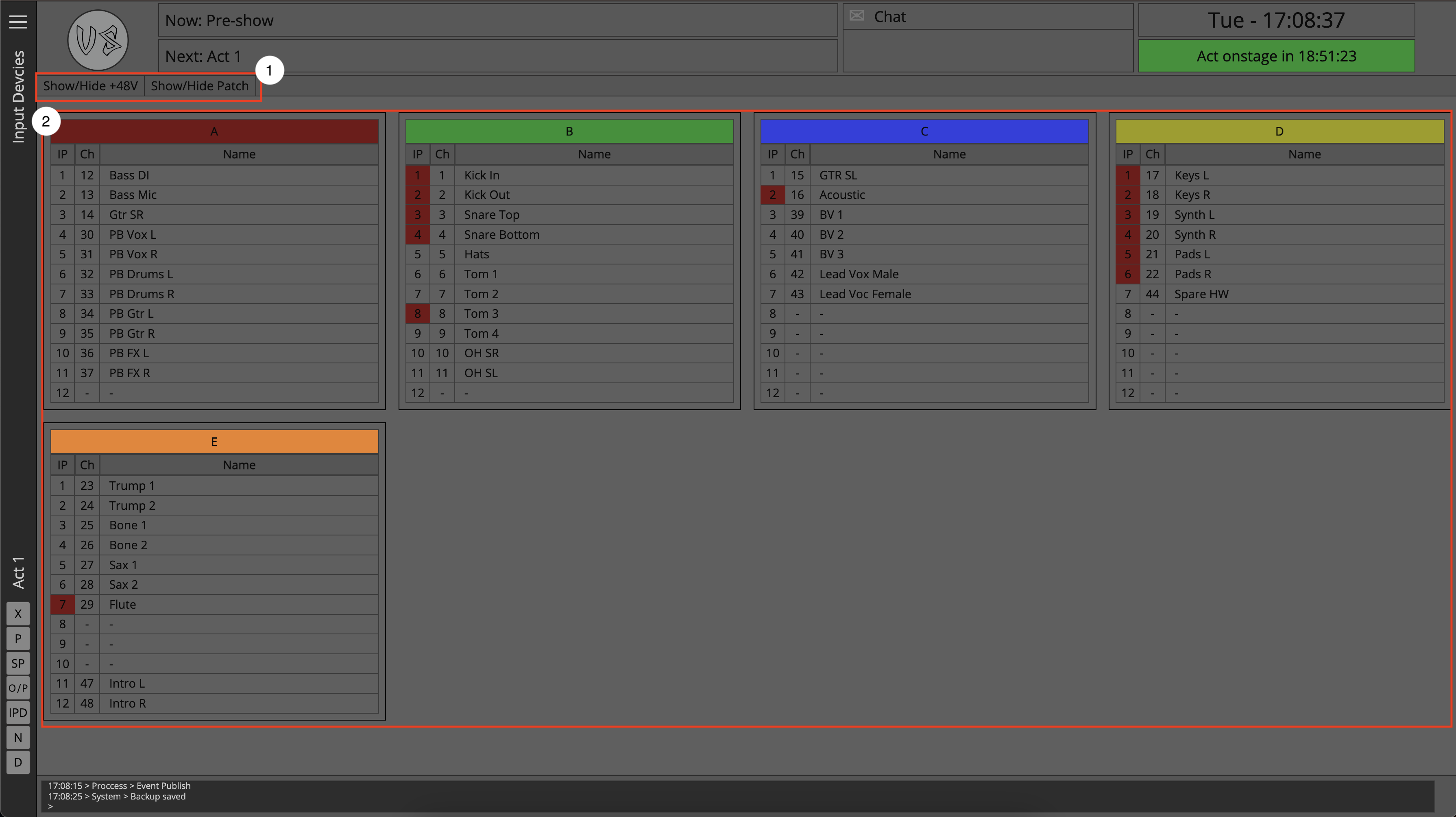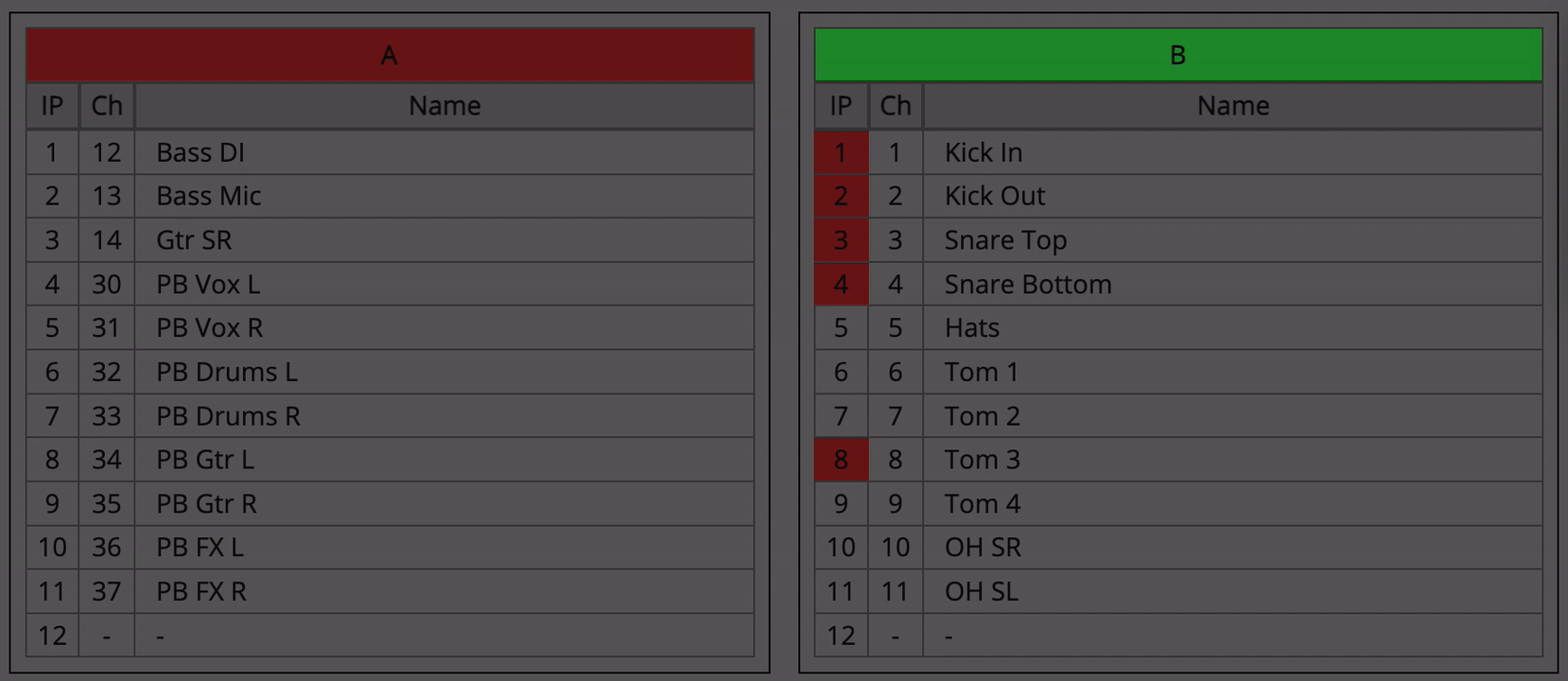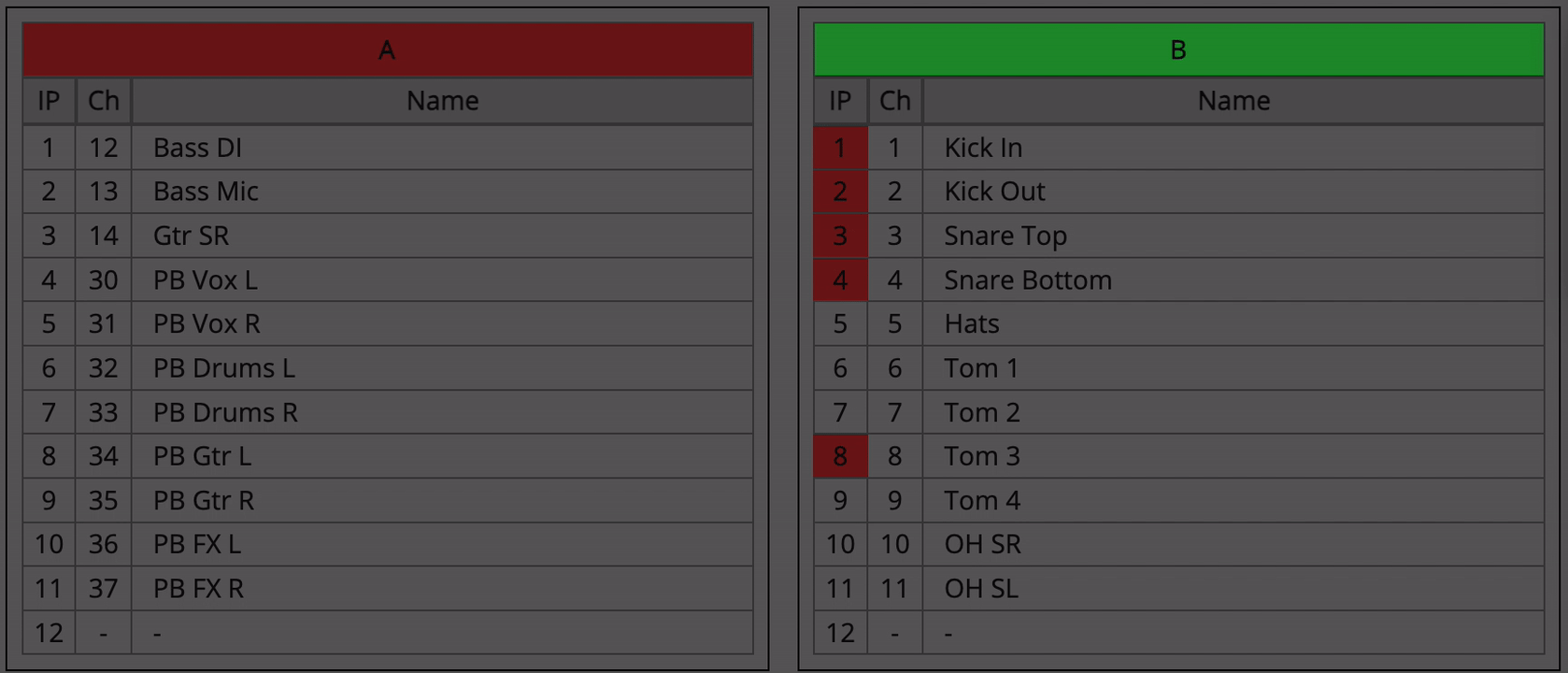Input Device Overview
The Input Devices Overview page lives inside of the 'side slider'. The side slider can be found on the right hand side of the Act Page and gives access to a number of focused pages for different tasks.
The intention of the Input Device Overview page is to give the user a visually friendly way to view the state of input devices and also give them ways to update and change the patch.
Page Layout
Upon clicking on the Input Devices overview button the user will be taken to the Input Devices Overview page, which features the following areas:

- The Ribbon Menu
- The Device Overview section
The Ribbon Menu
The ribbon menu contains additional functionality related to the Input Devices overview window.
Show/Hide +48V
The show/hide +48V button toggles a red visual status on the input device channels indicating if the device patched to this channel requires phantom power.
This is useful for having a quick overview as to if some channels have phantom power incorrectly assigned which can help when dealing with sources that might be damaged from phantom power incorrectly being turned on, such as Ribbon microphones or the output of portable electronic equipment such as mobile phones, tablets, and laptops.
Show/Hide patch
The show/hide button toggles an additional column (Ch ) on each input device which shows where the channel has been patched on the channel list. This can be a useful overview for users who like to physically patch by box rather than by the channel list.
The Device Overview section
The devices overview section will be populated with a visual representation for each input device that has been defined in the project, and gives an easy to read overview of the data for each input device.
Patching from the Input Devices Overview page
The user is able to make updates to the patch from this view by dragging and dropping channels between input devices.

Moreover, from this view, entire input devices can be swapped by dragging and dropping the name of the input devices onto one another, this has the effect of both boxes swapping their patch entirely.
This can be useful for example if an act has just come on stage and although they said the Guitar was on stage left and Bass was on stage right, now it is the opposite, the user can quickly update the patch with very little effort.

Users still benefit from the same patch warnings as featured throughout the application, making sure the user does not double patch a channel.
Exporting Data
Input device data can also be exported in various formats which might be useful to the user, for example the data could be exported as CSV data to then be imported into a piece of label making software to create clean and organized labelling for stage boxes and sub snakes on stage.
For more information on exporting data from Master Patch please see the Exporting Data Page.